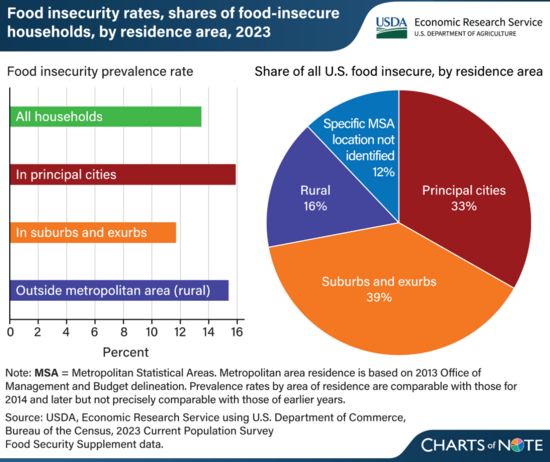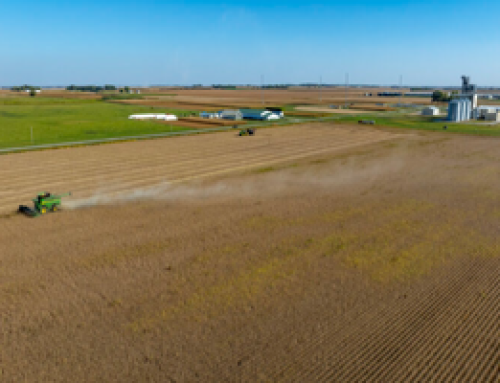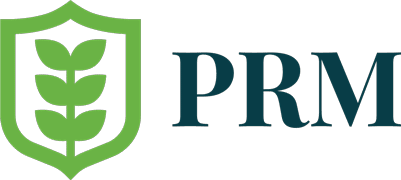Source: USDA news release
People in some areas of the United States are more likely than others to be food insecure, meaning they struggled to provide enough food for their household members within the past year. In 2023, 15.9 percent of food-insecure U.S. households were outside of metropolitan areas (rural households).
The food insecurity rate for rural households was 15.4 percent, compared with 13.5 percent for all U.S. households. These data show groups that are at increased risk of food insecurity as well as the frequency of a group’s occurrence in the food-insecure population.
For example, while the prevalence of food insecurity for suburban and exurban households near principal cities was 11.7 percent in 2023, this group accounted for 38.8 percent of food-insecure households. In contrast, the prevalence of food insecurity in 2023 was relatively high among households in principal cities (15.9 percent), but this group accounted for 33.2 percent of food insecure households.




